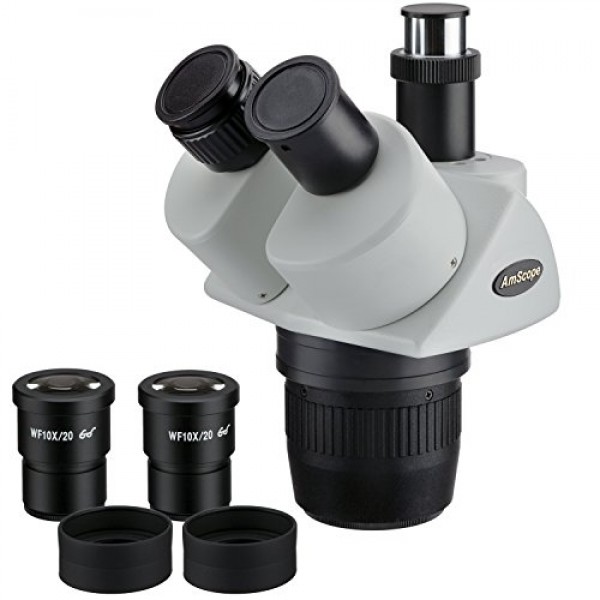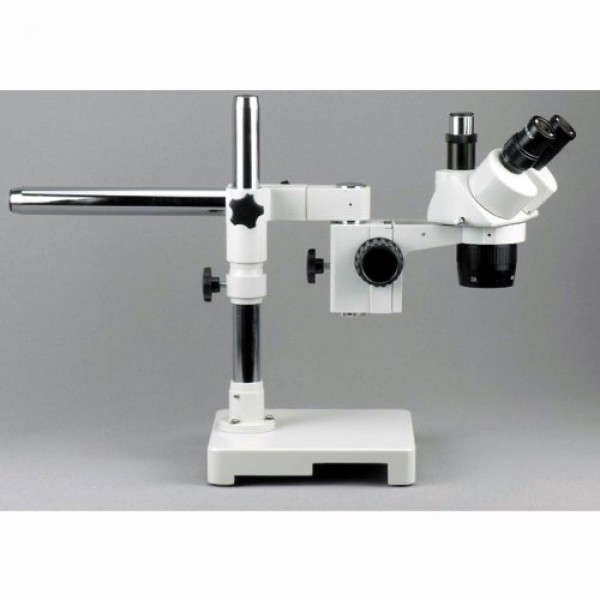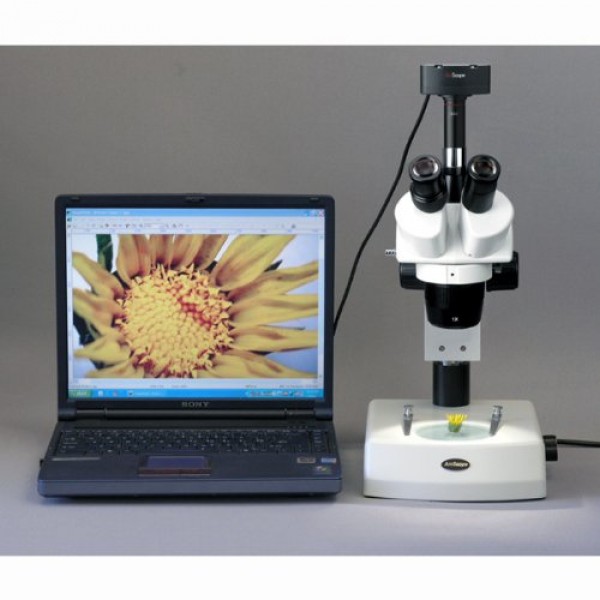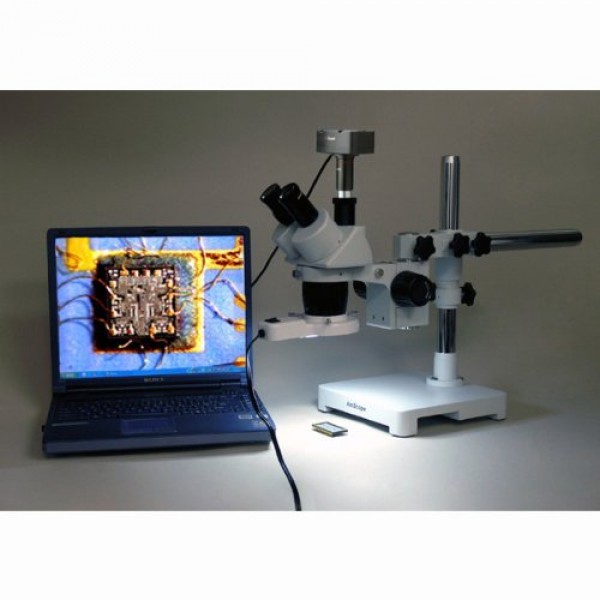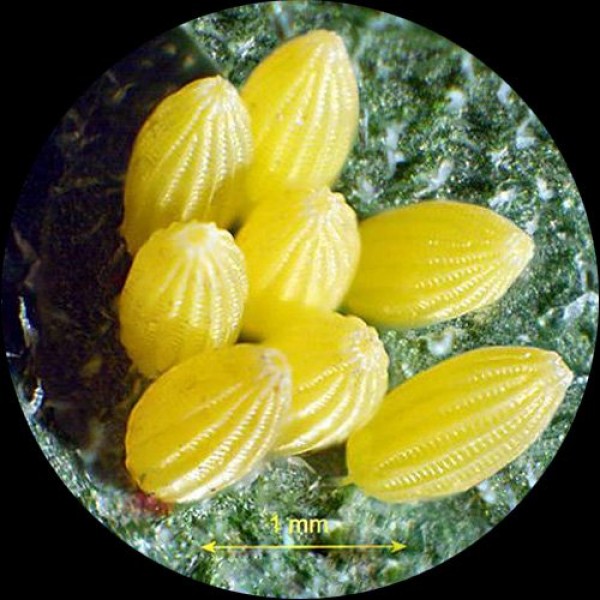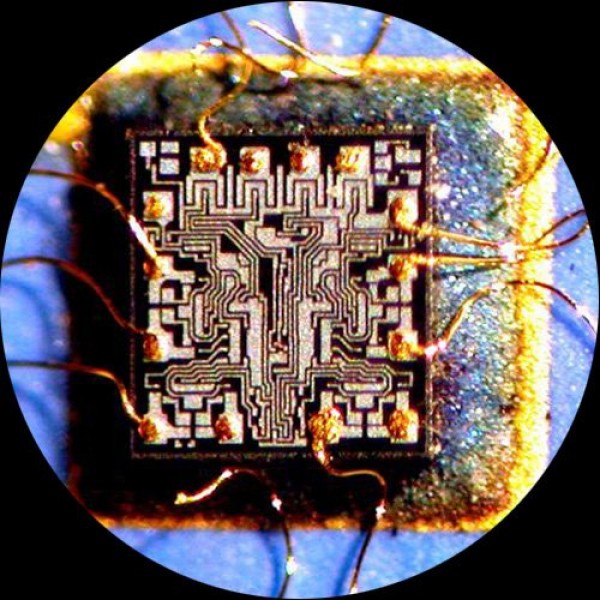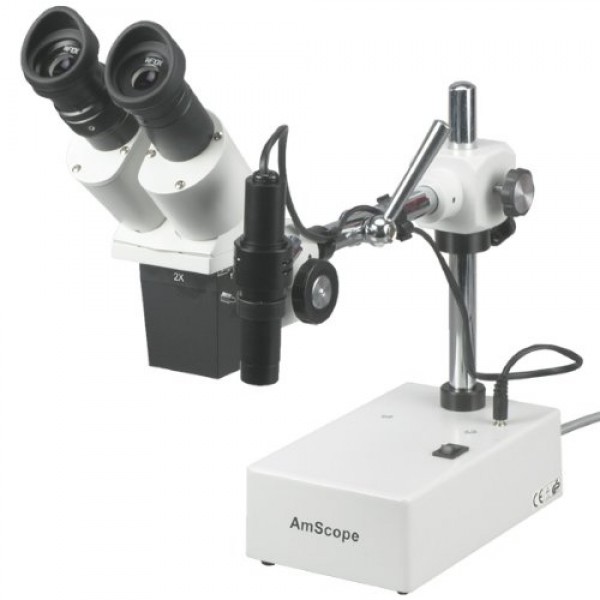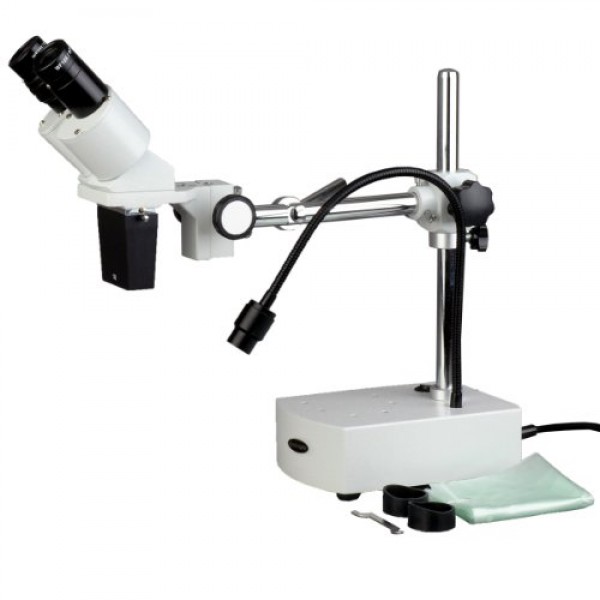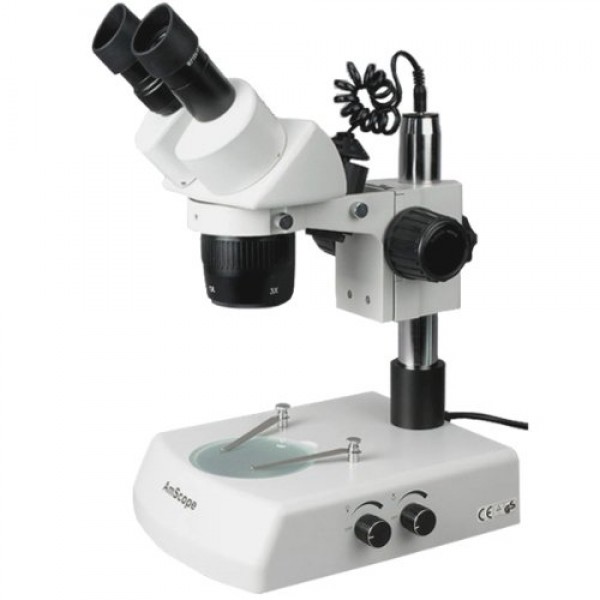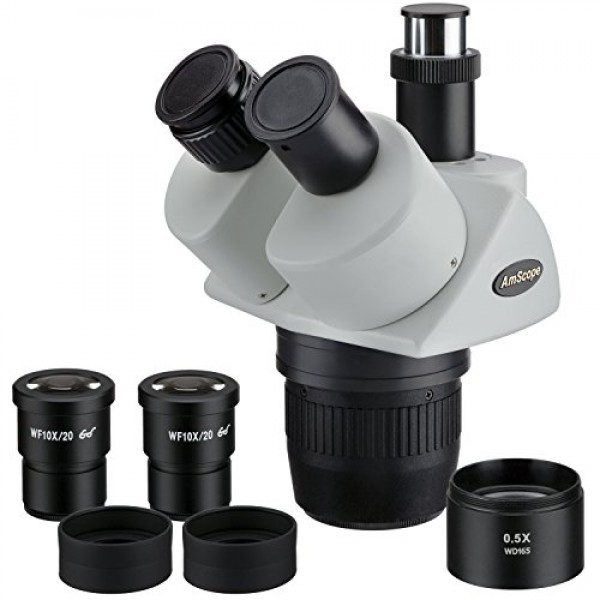AmScope SW24T Trinocular Stereo Microscope Head, WH10x Eyepieces, ...
The AmScope SW24T trinocular stereo microscope head has a 2x/4x objective and a pair of 10x20mm widefield high-eyepoint eyepieces. The microscope head has a 3" O-ring style mounting ring. The trinocular viewing head has an interpupillary range of 47 to 75mm, a 45-degree inclination to reduce eye and neck strain, and 360-degree rotation to enable sharing. The vertical trinocular port can be used as a C-Mount or 23mm photo port (camera sold separately). The WF10x20mm super-widefield high-eyepoint eyepieces combine with the 2x/4x objective to provide 20x and 40x magnification, and a longer working distance for inspecting large-scale specimens that require handling or repair. High-eyepoint eyepieces ease viewing for users who wear glasses, dioptric adjustment accommodates individual eye-strength differences, and eye guards ensure comfortable viewing. The optical glass lenses provide sharp images, and are fully-coated to ensure high-resolution images. A stereo microscope, sometimes called an inspection or dissection microscope, has low magnification and a long working distance that enables users to manipulate the object being inspected.
| Specifications | |
|---|---|
| Head | Trinocular |
| Magnification | 20x, 40x |
| Objective power | 2x/4x |
| Eyepieces (30mm) | WH10x20mm |
| Trinocular port | C-Mount or 23mm |
| Optical working distance | Up to 4" |
| Field of view | 0.787" at 10x |
| Head mounting size | 3", O-ring style |
| Accessory mounting size | 1-7/8" (48mm), female thread |
Microscopes are instruments used to enhance the resolution of an object or image. Types include compound, stereo, or digital. Compound microscopes use a compound optical system with an objective lens and an eyepiece. Stereo microscopes show object depth in a three-dimensional image. Digital microscopes are used to display an image on a monitor, rather than looking through a lens. Microscopes can have monocular (one), binocular (two), or trinocular (three) eyepieces, with varying magnification abilities. Magnification ability refers to the size of an image. Resolution, also known as resolvant power, refers to the clarity of the image. The interaction between field of view (FOV), numerical aperture (NA), and working distance (WD) determines resolution. Microscopes can control magnification through a fixed focus, or through a range of adjustments. They can also utilize LED, fluorescent, and mirror light sources to help control viewing capabilities. Microscopes are widely used in education, lab research, biology, metallurgy, engineering, chemistry, manufacturing, and in the medical, forensic science, and veterinary industries.
United Scope manufactures microscopy equipment and accessories under the brand name AmScope. The company, founded in 1996, is headquartered in Irvine, CA.
What's in the Box?
- Trinocular stereo zoom head with 2x/4x objective
- WH10x eyepieces, one pair
- Eye guards, one pair
- Stereo microscope head for home or classroom use enables students and hobbyists to inspect biological specimens, rocks, stamps, jewelry, and large specimens that require handling or manipulation
- Trinocular viewing head with pair of 10x super-widefield high-eyepoint eyepieces, adjustable interpupillary distance, and 45-degree inclination to simplify viewing for young users
- 2x/4x objective provides low magnification and longer focal length for inspecting large-scale specimens
- 3" O-ring-style mounting head and 1-7/8" (48mm) female-thread accepts a light or Barlow lens (sold separately)

